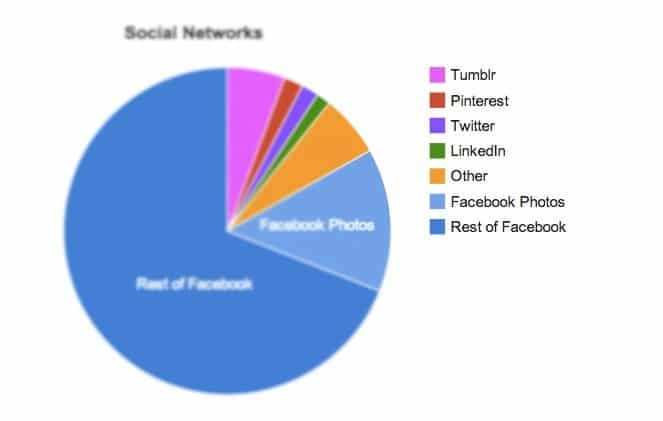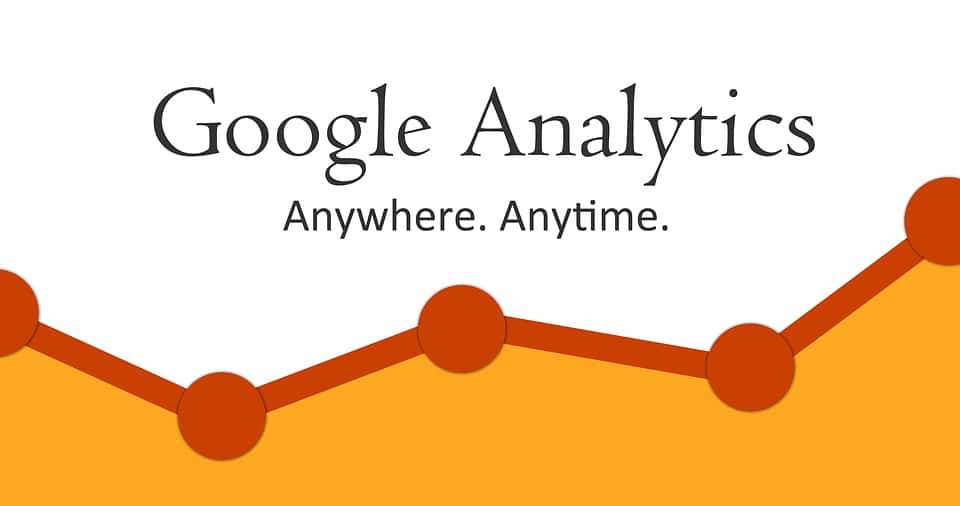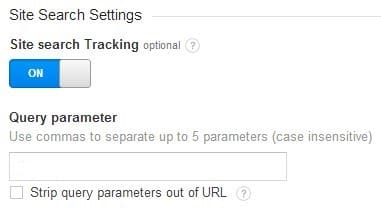
Marketers thrive off of data. Whether we use it to push ourselves to the next level, or educate our future decisions, it’s easy to see that data is valuable.
But interpreting and utilizing this data can get confusing.
It can also be difficult to know which data to prioritize and focus on.
Here are some of the best ways to use your website stats and make your site more profitable.
Identify Which Paths Make You Money

The main purpose of web analytics is to figure out if your website is successful. So there are data sets around your general traffic, bounce rates, and even how people find your site.
By using this data, you can find out what pages, tactics, and flow paths are making you the most money.
From there, you can learn, tweak, and recreate these paths to become even more successful.
The best way to do identify which paths are the most successful is to work backward from the point of sale.
Choose which converting page or product has been the highest converting and look at how consumers got there.
Working backward, identify what makes these pages unique or effective.
Contrast these factors with similar pages that may not be converting effectively.
Follow these paths to how these people commonly find the site.
Once you have a clear idea which tactics are most effective, you can recreate them for other products and conversion pages.
You can also streamline your sales funnel, ensuring potential consumers all get a similar experience that you know works.
Combine Your Data With Additional 3rd Party Data

Your site’s data is incredibly important, especially when it comes to finding out what works and what doesn’t on your site.
But if you are looking to take your marketing to the next level, it won’t be enough.
You’ll have to look at other sources and combine it with your findings.
For example, predictive analytics can guide you on how to harness future trends for your advantage, but it’s unlikely your personal data will be enough.
Your site’s analytics are like a tiny snapshot of the internet, but doesn’t give you a lot of knowledge regarding how your people act online.
Outside data can show you what people are searching, historical cycles for trends, how people use social media, and more.
By ignoring that extra data, you lose out on the chances to focus your marketing even further.
Updating Your Target Markets

When you first begin a campaign, you invest time and money into researching your target markets, probably even crafting personas to represent them.
As the campaign unfolds, you gain more data, more insights into your target markets.
You learn their habits, preferences and personalities that allows you to better understand them.
On a normal basis, compare your data with your personas and target market.
This way, you can find data that backs up previous assumptions, make new connections and refine your strategies.
As you probably refer back to a document about your target markets on a regular basis, having up to date information could lead to better informed decisions.
A good rule of thumb for when it’s time to update your personas is whenever you see a major change happen, whether in your industry or in consumer interactions.
That includes seeing major drop offs in web traffic or a new competitor makes some big waves.
Differentiate Between Mobile and Desktop Users

People look at your site using two main types of technology.
The first, and more traditional type, is the desktop computer.
The other is using mobile devices, ranging from smartphones to iPads.
Consumers use both to access your site, but how they interact with your site differ greatly.
To learn how they differ, separate your google analytics data between mobile and desktop visitors.
Having these numbers together can give you incorrect data, which in turn could result in missed opportunities and misguided efforts.
Analyzing the separating data sets can educate you how visitors interact on each platform and where you might need to change for each.
For example, mobile visitors are less likely to read long articles, and may just be looking for a short answer.
If your analytics support this, you might want to change how content is displayed on mobile versions of your site.
Comparing the data sets can be a big help to your cross device marketing.
While it’s difficult to track visitors across platforms, you can see which pages are most effective on each platform and how they might relate to each other.
Tracking What People Are Searching On Your Site

A major barrier for marketers is knowing exactly what people are searching for to find your site.
Google use to provide this keyword data, but no longer does.
But, if you include a search bar function on your site, you are able to track the searches visitors do.
This is a good idea, especially if your site provides tons of information, are a major resource to many people or you are an ecommerce site with a ton of products.
This data is an often overlooked source of insight into how people use your site.
If the purpose of your site is to provide information, how people search can inform you on which topics are most requested.
If you don’t have content that properly answers those inquiries, you can produce some to meet that demand.
If tons of people search for a specific page, you might want to relook your site’s interface and how people navigate.
These searches can also tell you how effective your branding is.
If lots of people are searching topics you don’t focus on, then your branding isn’t coming across effectively.
For example, if you are a site dedicated to online marketing, and people are searching for accounting advice, your branding and inbound efforts aren’t working as expected.
E-commerce sites can discern a lot from their on-site search data. If people purchase products off of a specific search, then you know that the correct products were showing up.
If a user does multiple searches but makes no purchase, then they weren’t satisfied with what they found.
The exact wording of searches can also clue you in on the concerns your target market has.
Users that filter through the results by price or availability can identify other needs they have that you can utilize.
Where Are People Leaving Your Site?
Retaining your visitors is just as important as getting them, yet there seems to be less thought put into it.
Looking at what pages people are leaving can teach you a lot about the flow of your site and what pages are failing to keep people interested.
The perfect situation is that every visitor goes through the marketing funnel and only leaves the site after making a purchase.
That doesn’t happen though. For a variety of reasons, people will leave your site.
Looking for trends and common pages that lose people can identify gaps in your marketing funnel you need to fix.
If a specific page has a very large exit traffic rate, there could be something very wrong with it.
That could include anything from the page not loading right, a major grammatical error that turns people off, or something potentially offensive.
A big part of why people leave sites is because they have no reason to stay.
Every page should have a call to action to push people into the appropriate section of your marketing funnel.
Pages with higher exit traffic can hint at an ineffective call to action offer.
The best way to determine this is to look at the average time people spend on the page and your exit traffic rates.
If people spend the right amount of time on the page to fully experience it, but are still leaving, your call to action might be the cause.
What Are Your Referral Traffic Sources?
One major analytic that often gets forgotten is a site’s referral sources.
Of course, a heavy amount of traffic comes from search engines and direct traffic, but other sites and social media should not be forgotten.
Remember the tip above about following the most profitable paths?
Well, if any of those paths lead to something other than Google, you need to look more into it.
Maybe you’ve gotten tons of referral traffic from Facebook. Look into why. Is it because that’s where your target markets spend all of their time?
Maybe you have a few customers constantly raving about your products and putting out links Perhaps your social media manager is crushing it and has grown a massive following you can utilize even further.
Or perhaps you don’t get tons of traffic, but the referrals you do get have a higher conversion rate.
That is definitely something you need to look into.
Especially if your sources are other people and businesses, you want to be in touch with them, because they are helping you out tremendously.
Lumping these traffic sources with everything else is a major mistake.
They might be at a different stage of your marketing funnel than people finding you through Google, so be prepared for them.
Analyze how their paths might differ and optimize it for conversion.
Is there a specific data set you swear by?
How are you measuring your site’s effectiveness?
Share with us in the comments below.
Ben Allen is a curious writer, a loving father, and a caffeinated video gamer. Follow him on Twitter!

